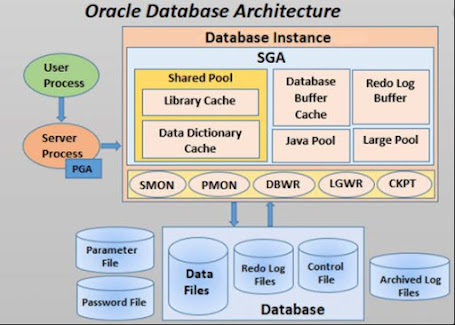MongoDB is a NoSQL document-oriented database that offers a flexible, scalable, and high-performance data storage solution. MongoDB's architecture is designed to handle large volumes of data, distributed deployments, and provide high availability. Let's explore the key components of MongoDB's architecture:
Document Model: MongoDB stores data in flexible, self-describing documents using BSON (Binary JSON) format. BSON documents are similar to JSON documents and can contain nested structures and arrays. Each document in MongoDB is identified by a unique "_id" field and can have varying sets of fields.
Collections: MongoDB organizes related documents into collections, which are analogous to tables in relational databases. Collections are schema-less, allowing documents within a collection to have different structures. Documents within a collection can be indexed for efficient querying.
Sharding: Sharding is a horizontal scaling technique in MongoDB that enables distributing data across multiple machines or shards. Each shard holds a subset of the data, and collectively they form a sharded cluster. Sharding allows MongoDB to handle large data volumes and accommodate high traffic loads.
Sharded Cluster Components:
- Shard: A shard is a single MongoDB server or replica set responsible for storing a portion of the data. Multiple shards work together to handle data distribution and parallel processing of queries.
- Config Servers: Config servers store the metadata about the sharded cluster, including the mapping of data chunks to shards. They provide the necessary information for query routing and ensuring data consistency.
- Query Routers: Query routers, also known as mongos, are responsible for receiving client requests and routing them to the appropriate shards based on the metadata from the config servers. They act as the entry point for client applications to interact with the sharded cluster.
Replication: MongoDB supports replica sets, which provide high availability and data redundancy. A replica set consists of multiple MongoDB servers, where one server acts as the primary and the others serve as secondary replicas. The primary replica accepts write operations, while the secondary replicas replicate the primary's data asynchronously. If the primary fails, one of the secondary replicas automatically gets elected as the new primary, ensuring continuous availability.
Indexing: MongoDB supports various types of indexes to improve query performance. Indexes can be created on individual fields, compound fields, text fields, geospatial data, and more. Indexes allow for efficient data retrieval by creating data structures that speed up the query process.
WiredTiger Storage Engine: MongoDB utilizes the WiredTiger storage engine as the default storage engine since version 3.2. WiredTiger offers advanced features like compression, document-level concurrency control, and efficient storage layouts. It helps in improving performance, scalability, and storage efficiency.
Aggregation Framework: MongoDB provides a powerful Aggregation Framework that allows for complex data processing and analysis. It supports various stages and operators to perform data transformations, filtering, grouping, and aggregations within the database.
Security: MongoDB offers authentication and authorization mechanisms to secure the database. It supports username/password authentication, certificate-based authentication, and integration with external authentication providers. Access control can be enforced at the database, collection, and document levels.
MongoDB's architecture provides flexibility, scalability, and high availability for managing modern data requirements. It enables efficient handling of large-scale distributed deployments, horizontal scalability through sharding, and redundancy through replica sets, making it suitable for a wide range of applications and use cases.










